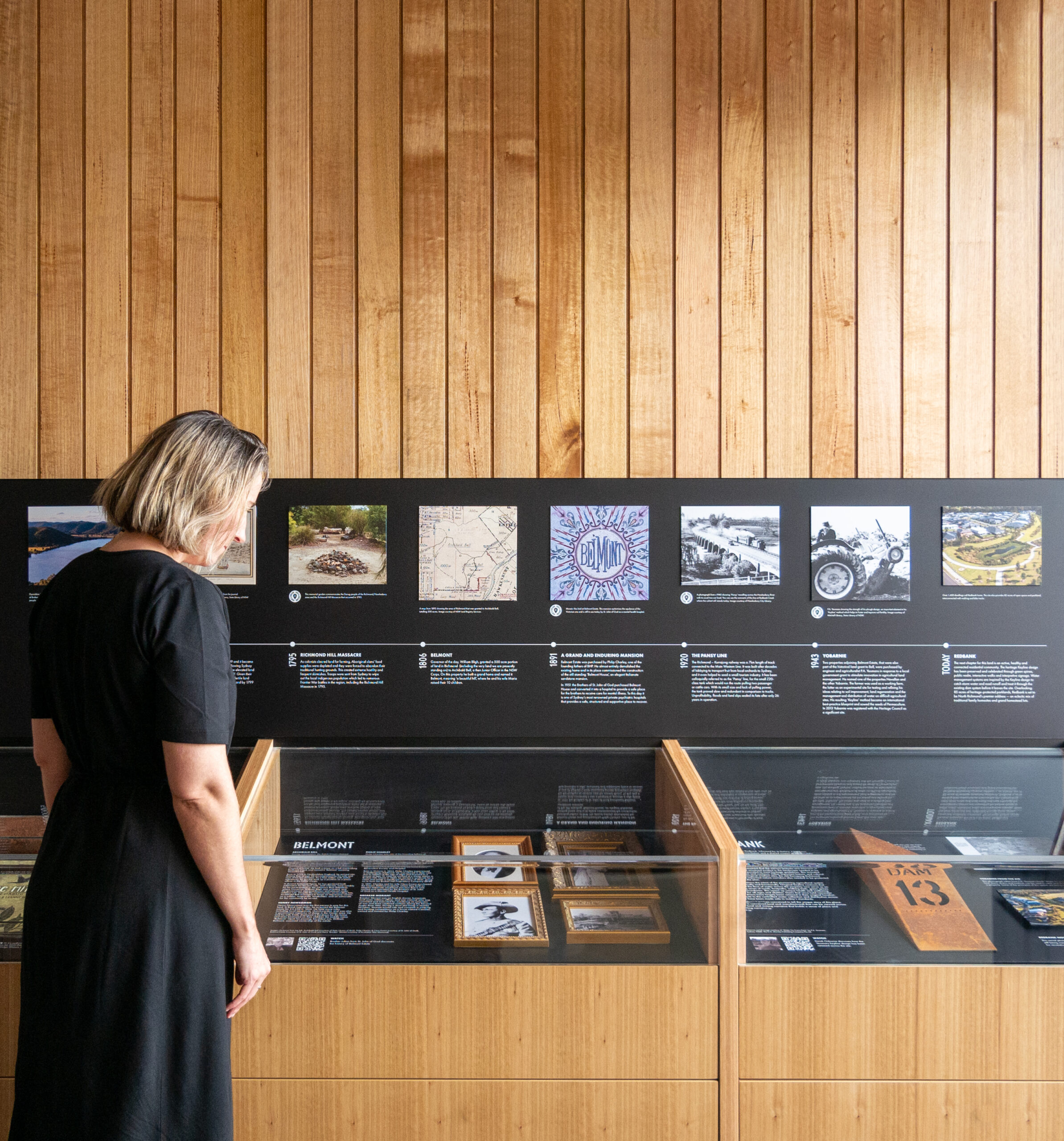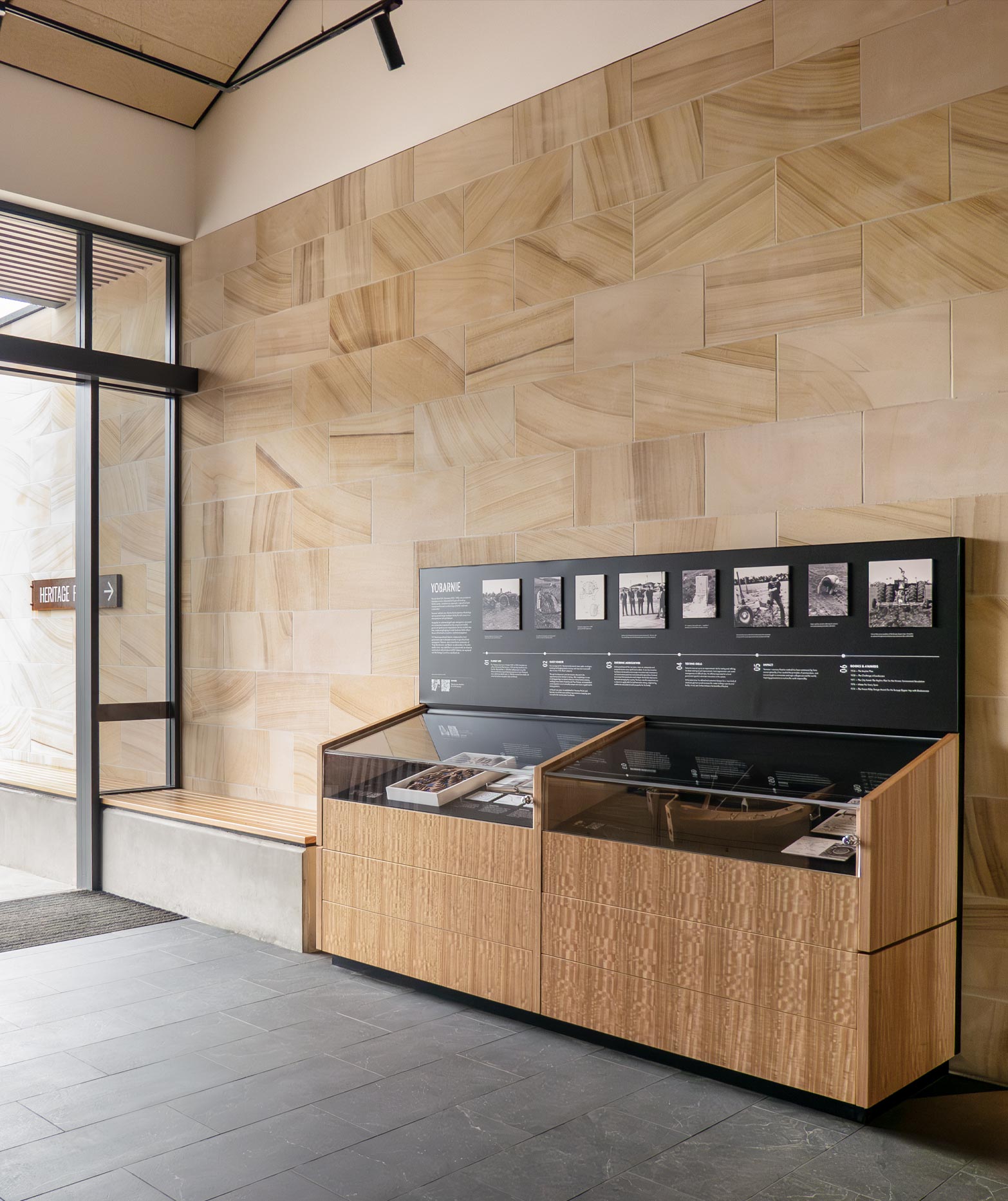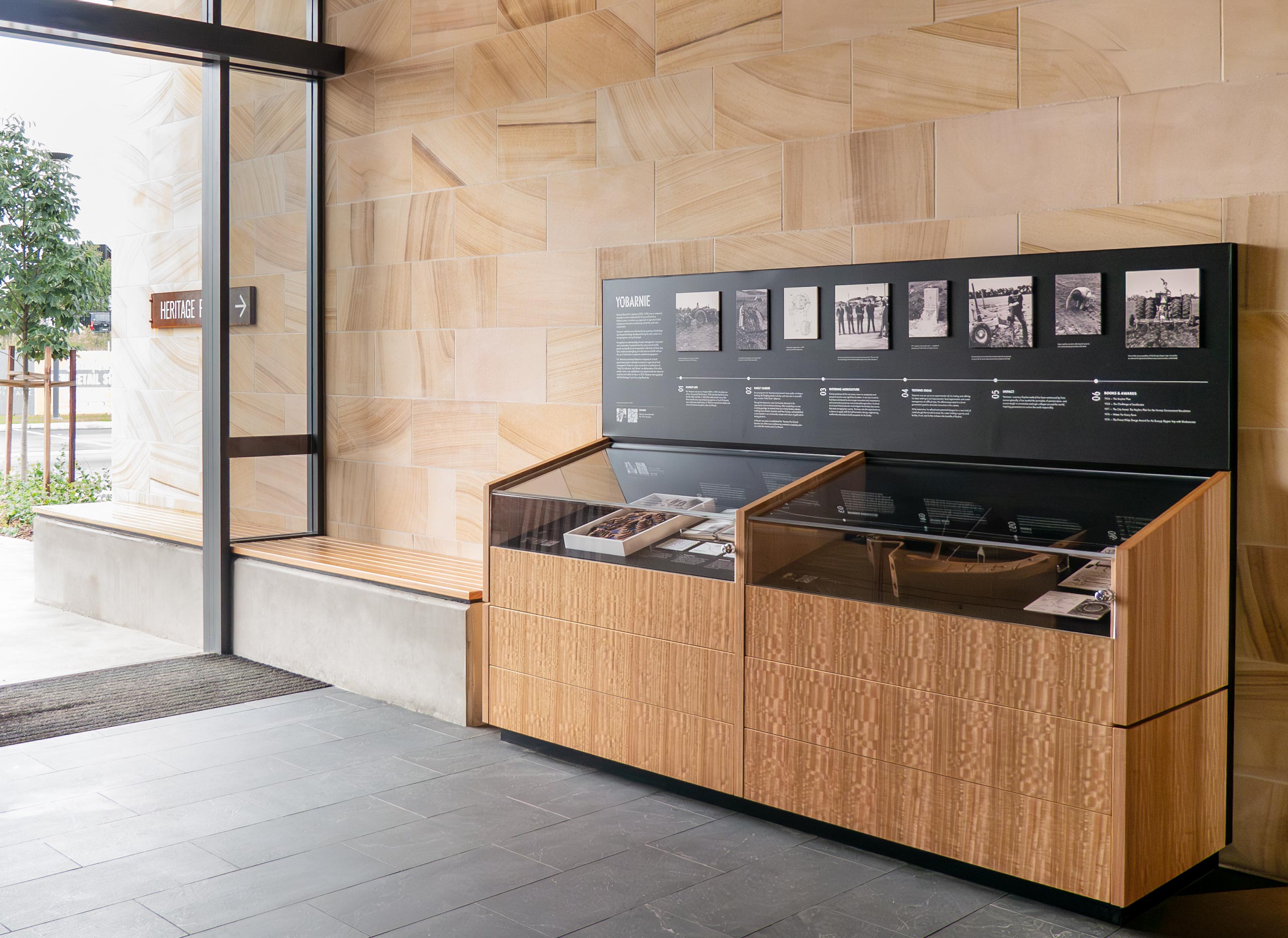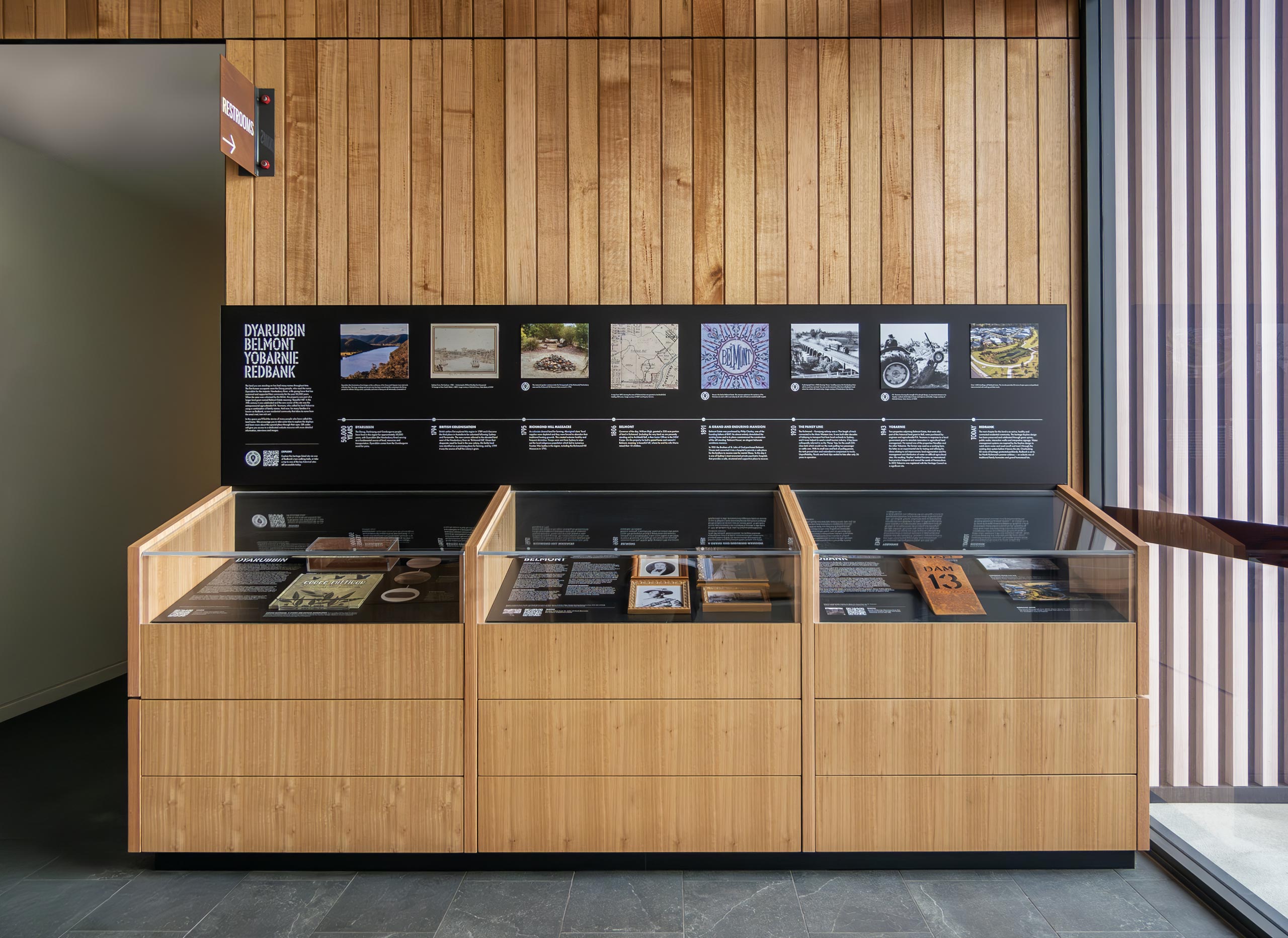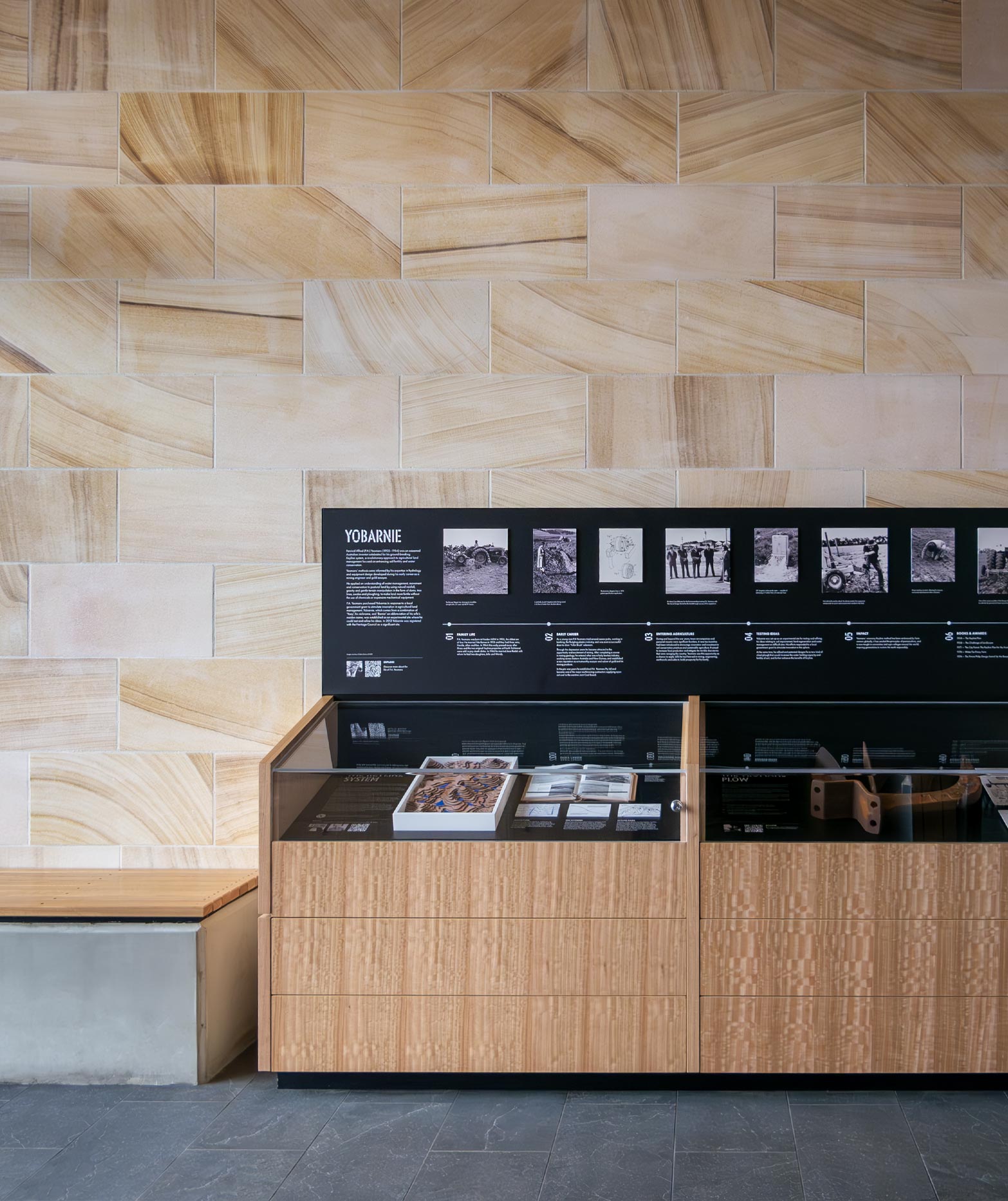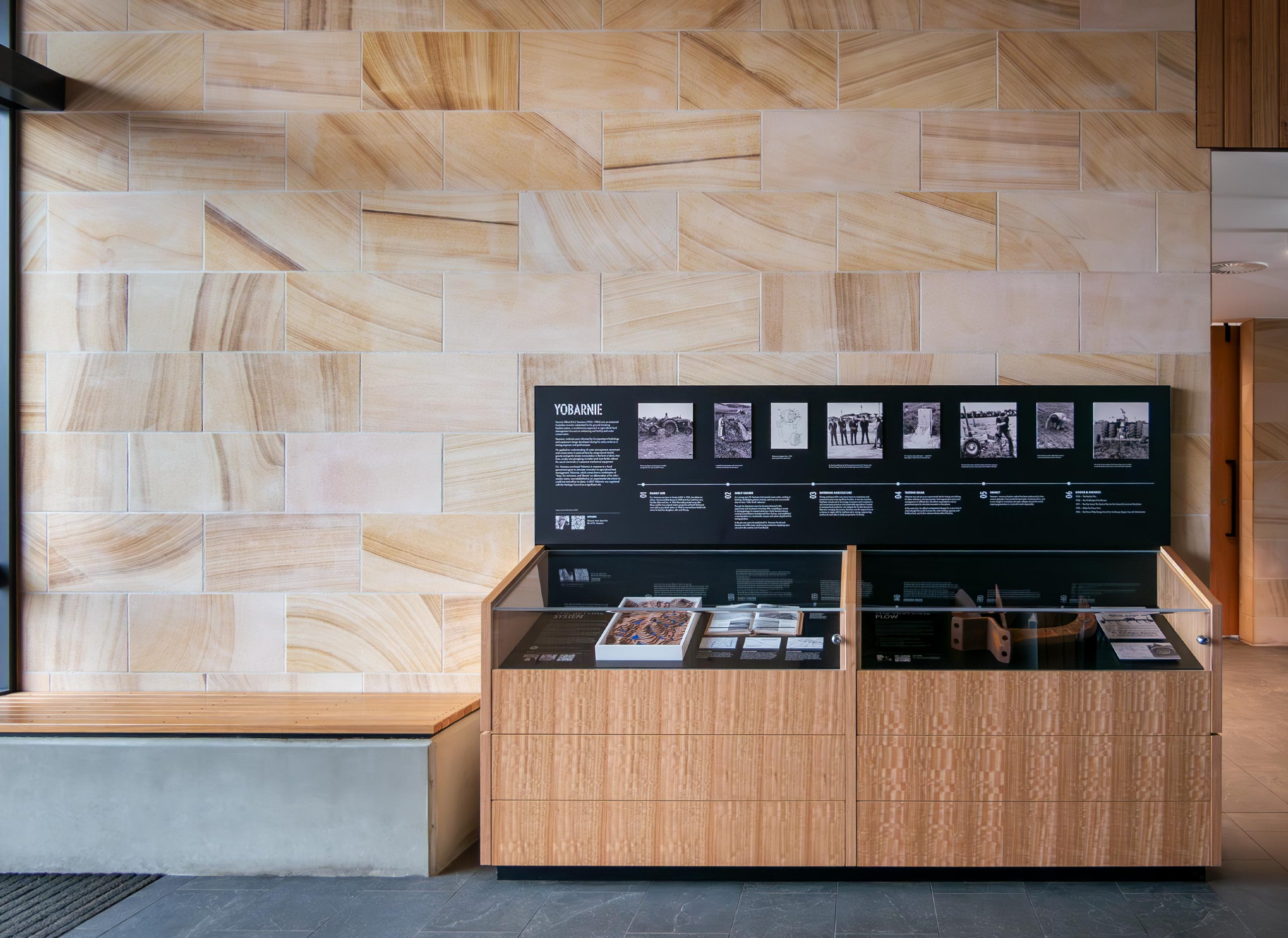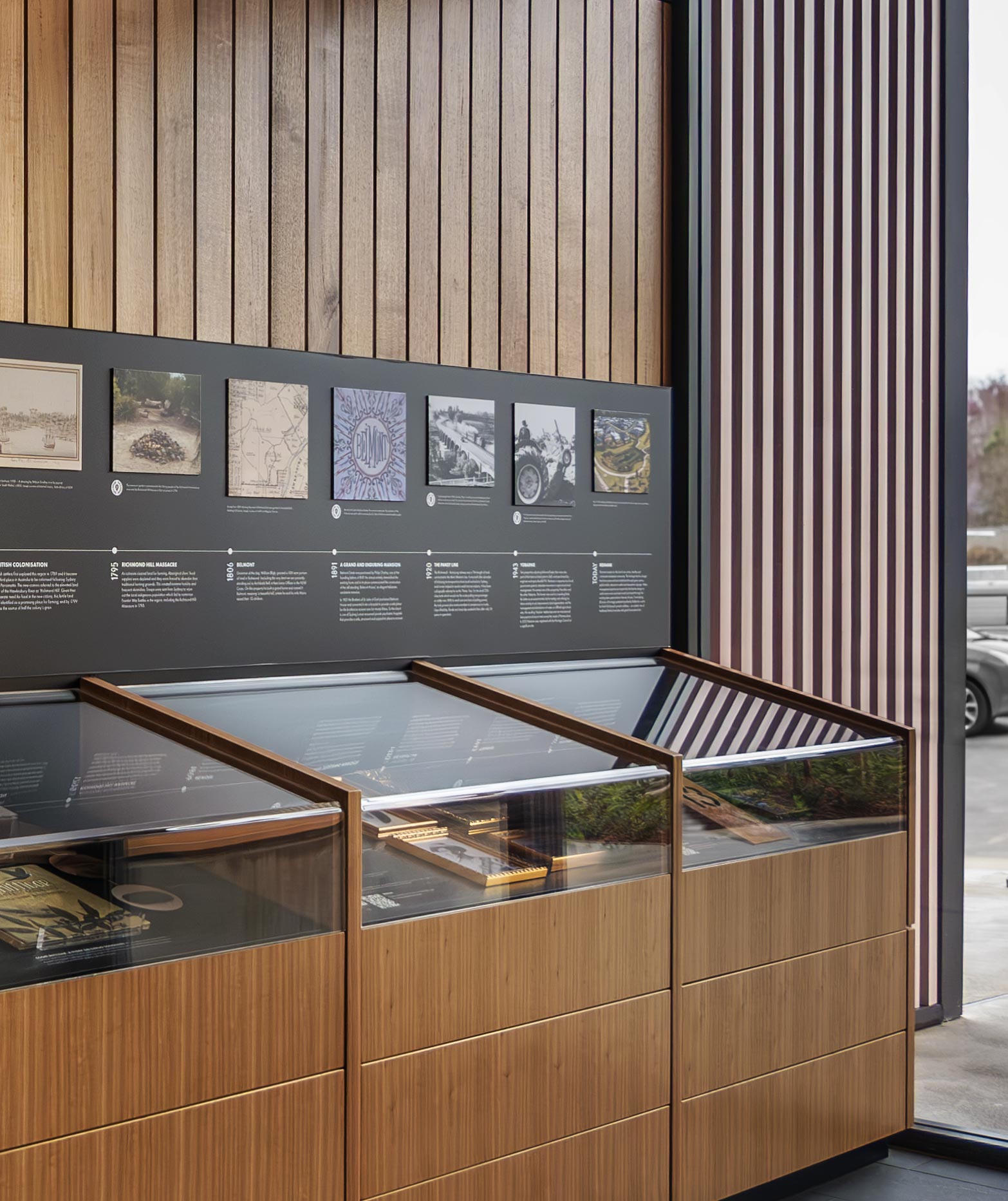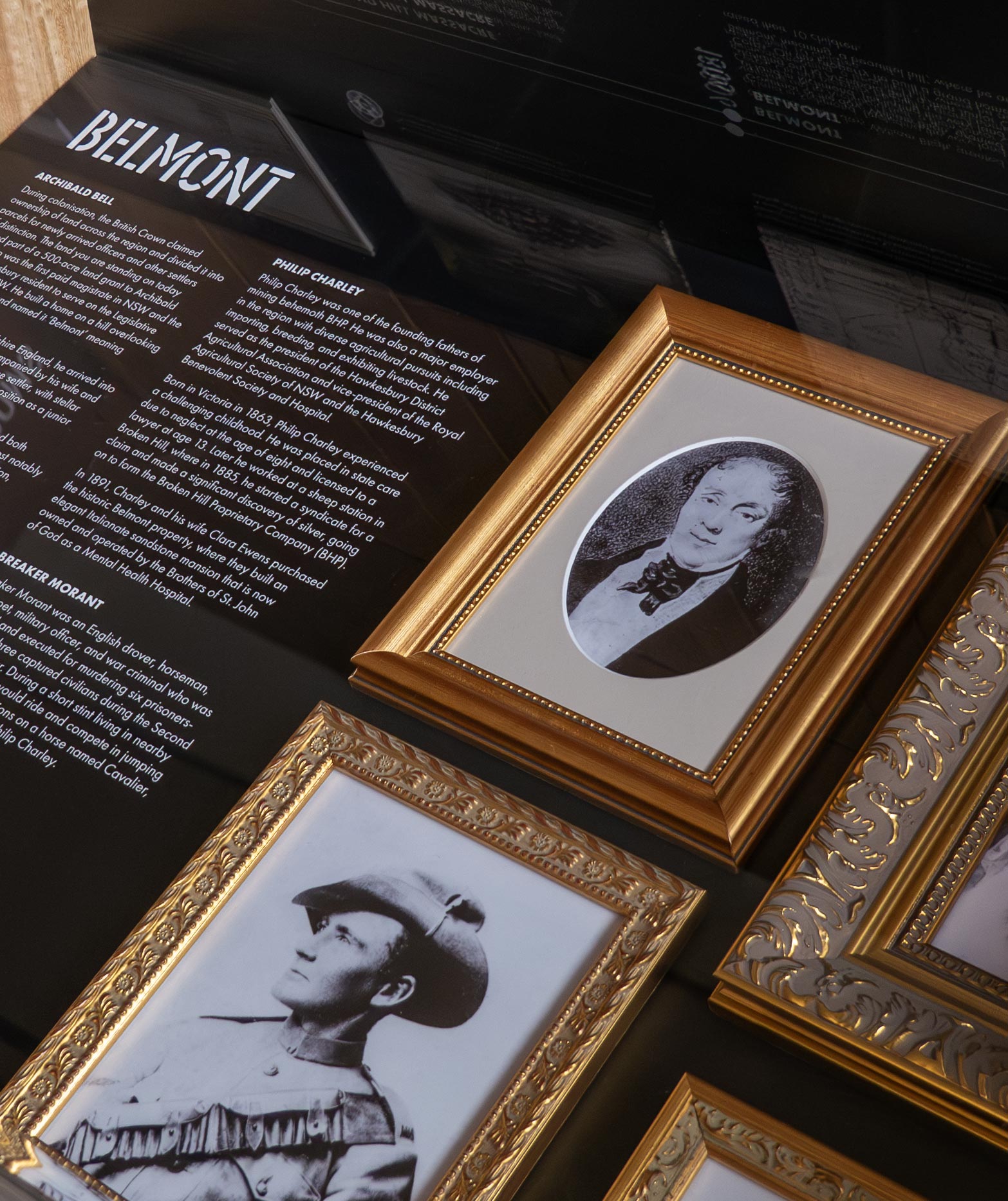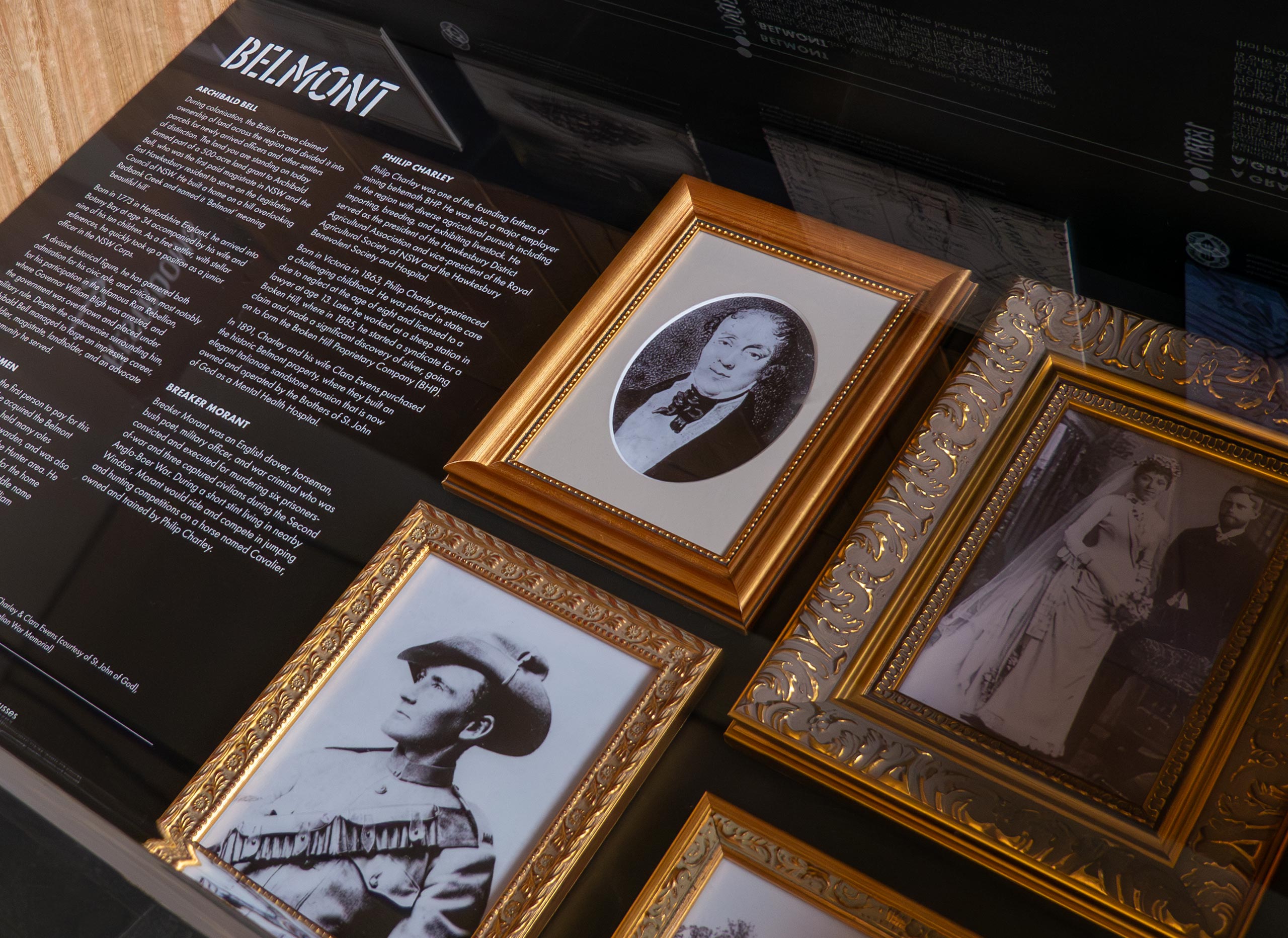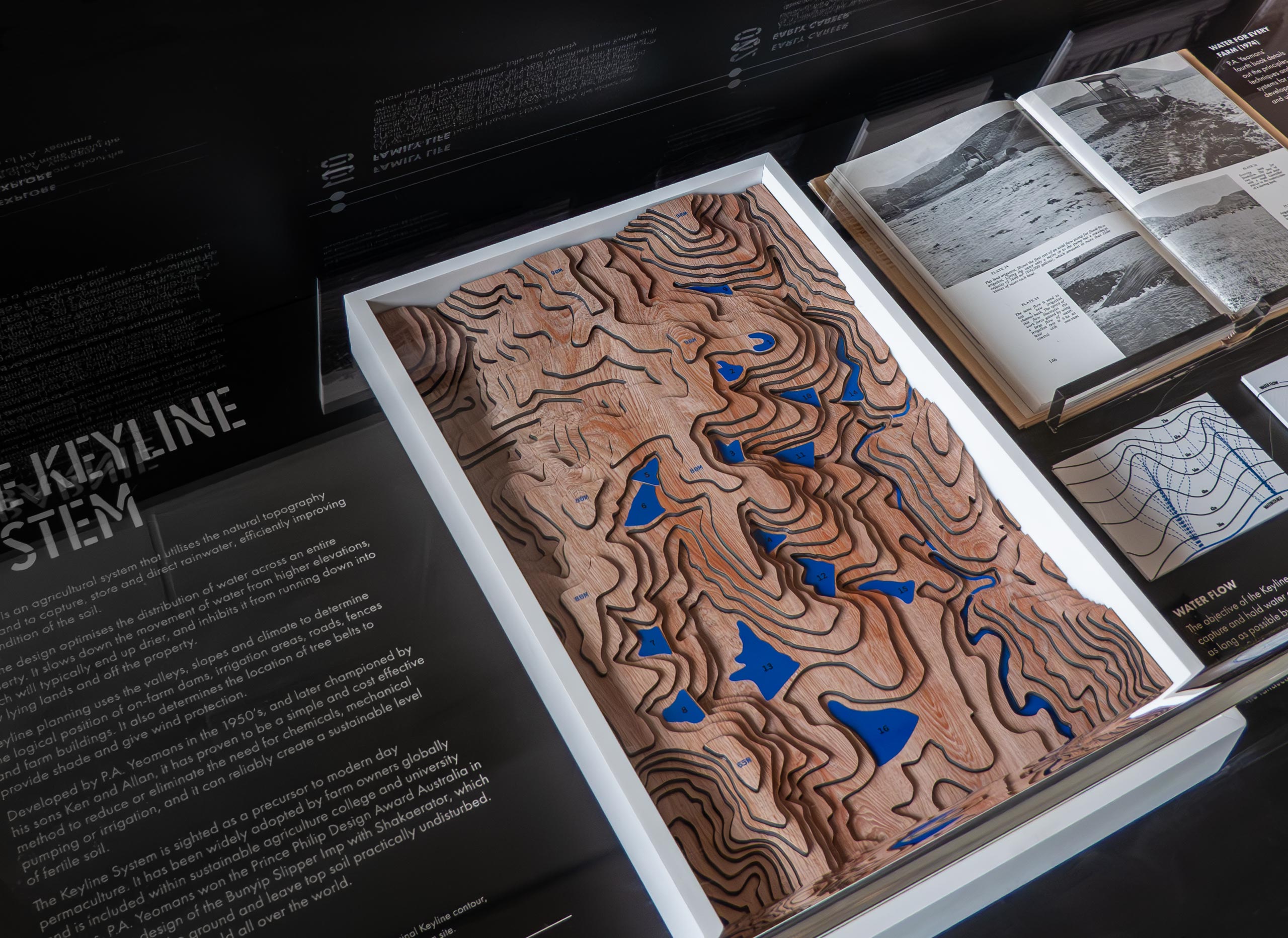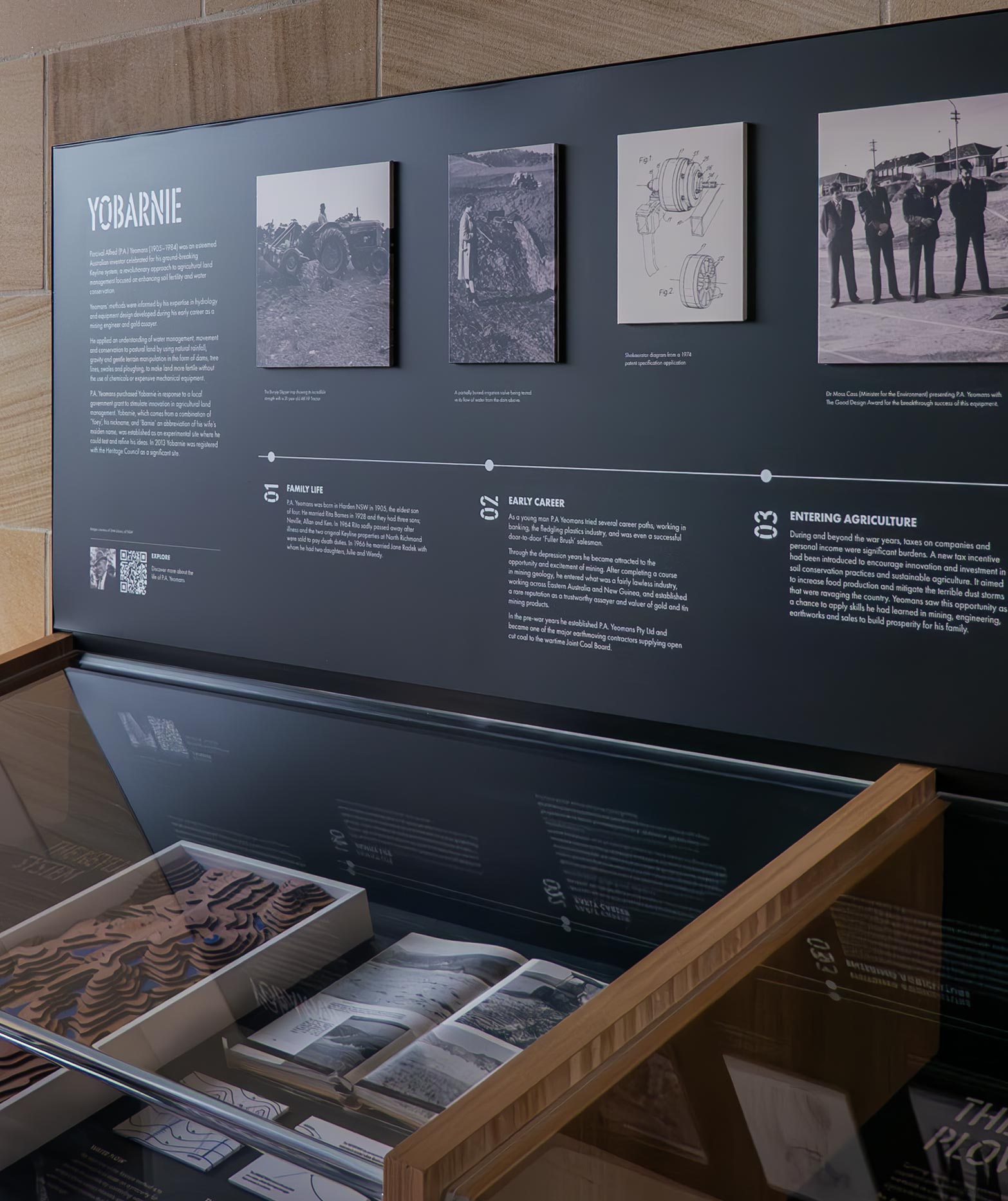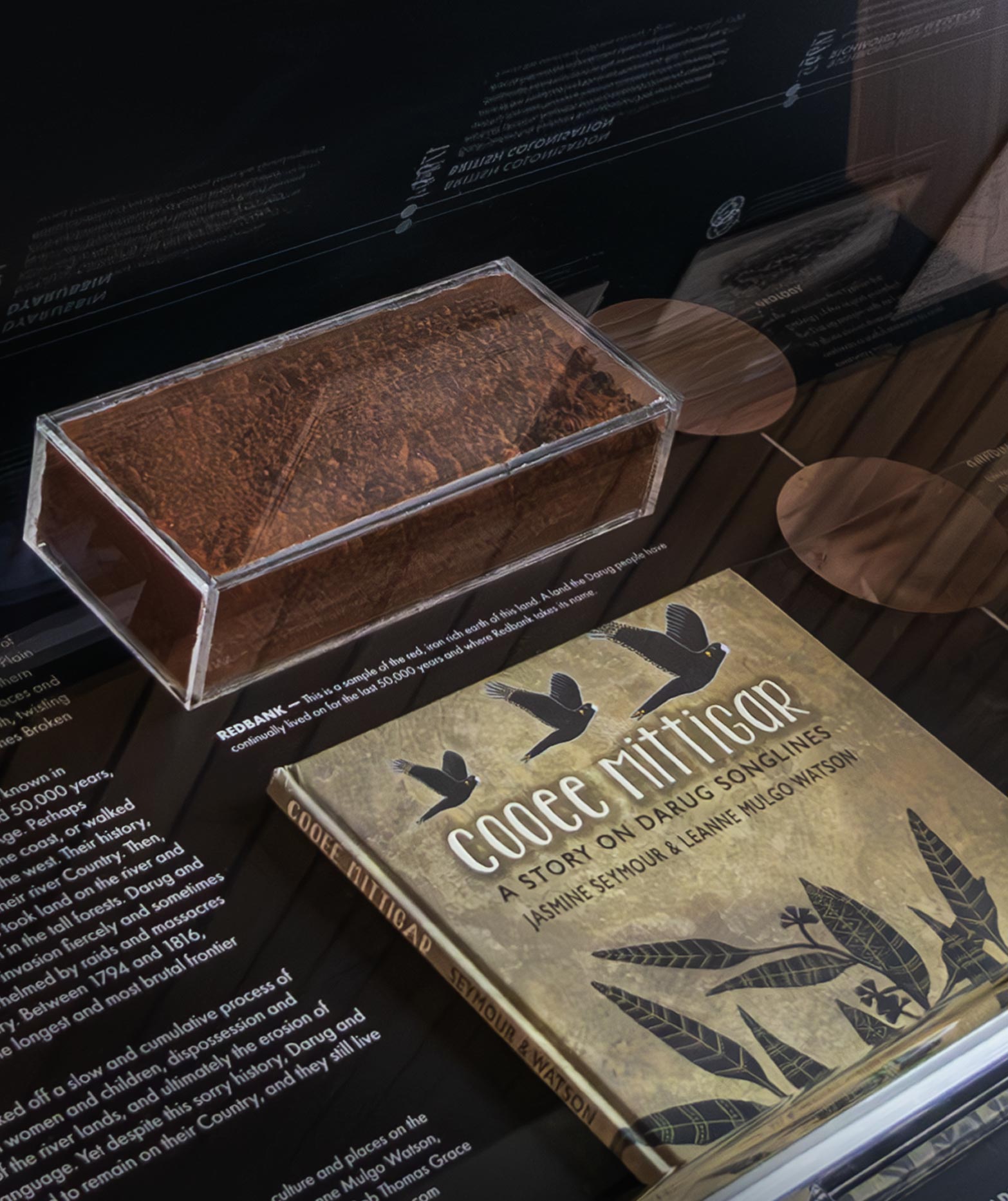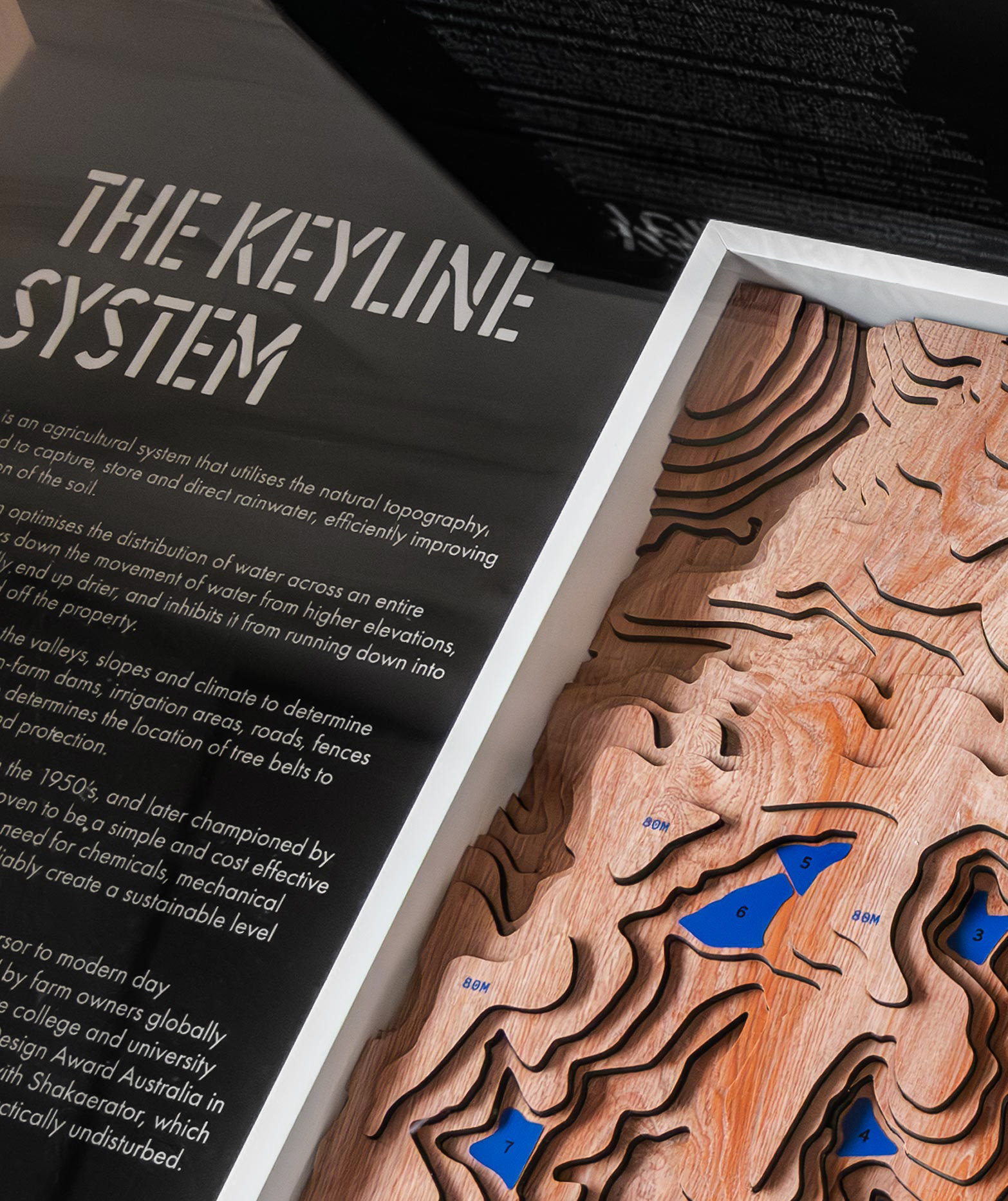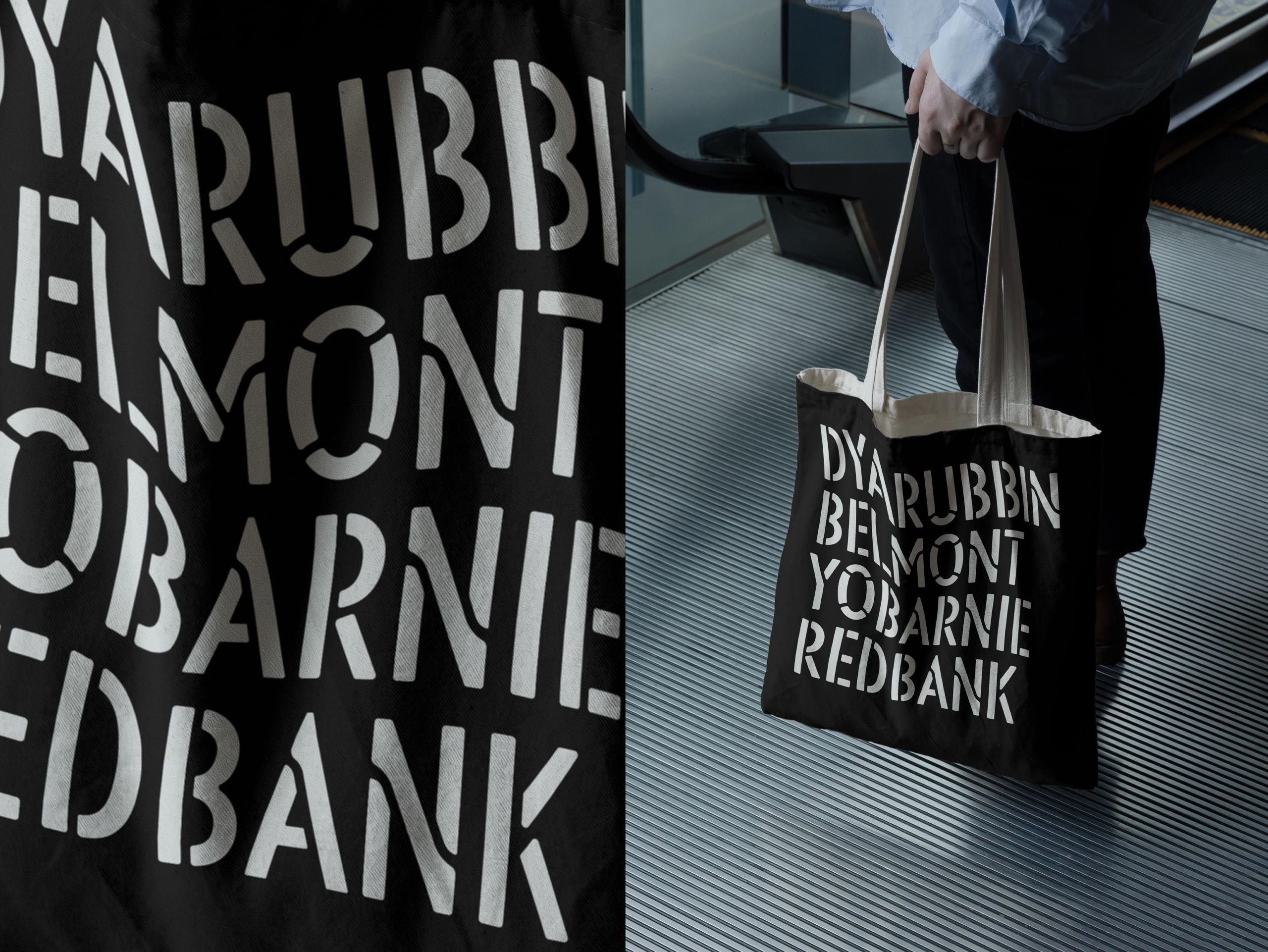The brief was to create a few posters for a foyer space adjoining a new cafe in the Redbank Community residential estate. The property was listed with Heritage NSW as a significant site, and as part of the development approval some piece of permanent public acknowledgement and celebration was required. The posters were to contain a simple montage of historic photos that showcased P.A Yeomans ‘Keyline Method’ of sustainable agricultural land management in Australia.
We were intrigued – about P.A Yeoman’s theory initially, and then after a bit of digging, why he was mentioned as being the forefather of modern day permaculture. We wondered about the lineage of the land, the forefather of BHP who built the grand old mansion next door, and whispers of an old marble tomb onsite. We wondered about the original custodians, the Darug people, and the massacre that took place nearby on the banks of their Dyarubbin (what we call the Hawkesbury River).
Surely a few posters just wouldn’t suffice! It is so rare that we have the opportunity to connect with the history of the place we call home. We felt Redbank residents and visitors would appreciate this knowledge and it would help them take their place in the next chapter of this land. Our client agreed, and so down the rabbit hole we went!
The Redbank Heritage Foyer has been a labour of love involving hours of interviews with Yeoman family members, local historians, the State Museum and representatives of the Darug community. Our aim was to tell the story of this incredible, fertile piece of land which has been prized for thousands of years, through the eyes of the people who have called it home.
Each case represents a period of time, taking visitors to the community hub on a journey that celebrates the rich history of the place and connects them to key landmarks on site which they can then walk, explore and see with their own eyes. QR codes link to interviews, and displays of original books, rare photographs, refurbished artefacts and models of terrain provide further insight and depth to the stories.
The narrative of this land could fill a whole museum. We could easily spend another 3 years on its curation. It has been such a privilege to be a part of this project and to be able to help share these stories with the community in a permanent gallery space.
